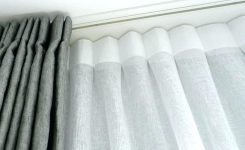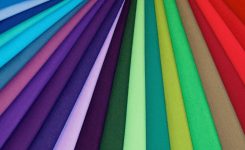BLOG, Fabric
Fabric Maintenance
Dry Cleaning , cleaning with solvents and no water. The cleaning solvent used by most dry cleaners, is the most effective cleaner so far for most of the curtain fabrics. However, dry cleaning customers should take their curtains out of the plastic bags and air them after dry cleaning.
You can inform yourself when selecting a dry cleaner. Is the location convenient and are they open when you need to drop of or pick up your dry cleaning? You don’t want to carry your curtains walking along the streets.
Pressing after cleaning should also be considered. It takes a skilled professional presser to do a quality job on linen and silk curtains. If the dry cleaner cannot explain the difference in pressing linen and silk versus wool directly, it is doubtful that your curtains will be handled with the care they require. Linen can stand heat when ironed, and should be pressed when damp. Silk don’t need high temperature iron and should be steam ironed. Wool should be pressed with steam and a moderate temperature.
Packaging of the cleaned curtain is also important. A curtain can be cleaned and pressed well but if it is packed into a small bag, it can become a wrinkled mess. Packing too many finished and bagged curtains into the dry cleaners rack can also wrinkle finished curtains.
Be an informed and fair consumer. Not all spots can be removed especially if you, the consumer, have pressed the stain into the fabric. Many stains can be heat set. Curtain care is the responsibility of both you and your dry cleaner.
Wet Cleaning, they advertise that their process will replace dry cleaning and the solvents they use. However, until this process is perfected and proven to effectively replace dry cleaning, caution should be used by the consumer. Wet cleaning is using water based chemicals. Some cleaners actually claim to have this service but just hand wash the curtains and then professionally press the curtains. This process works well with some fabrics. curtains may shrink, fade, or wrinkle so badly that pressing does not restore their original look of the fabric.
Professional laundering is offered by most dry cleaners. Washable curtains are washed and pressed. Some of the laundering is done with very hot water which may shrink the curtains.
Home Laundering is easier to control but choosing a detergent for home laundering is a daunting task!
General laundry detergents work well on most washable fabrics. Read the label to determine various additives. Added bleach may gradually remove the dyes or colour unless the curtain is colourfast to bleach. Most all detergents have “surfactants” this is nothing new. Whiteners can be either bleach or bluing agents. More expensive is not always better.
Soap is not the same as detergents. Although soap has been improved over the years, it still leaves a deposit we call “soap scum” in the shower and bath. This scum is difficult to remove from fabrics if soap is used in the laundry.
Fabric softeners, both liquid and dryer sheets, add products to your fabrics. Some of the softeners are wax based which leaves a coating on the fibre creating a feel of softer but reducing the absorbency of the fibre. Some softeners have a perfume that is allergy related for many people. If you have ever used a fabric softener dryer sheet with your polyester curtain, you will see spots appear on your curtains. This is actually a wax and can be removed by re-washing.







